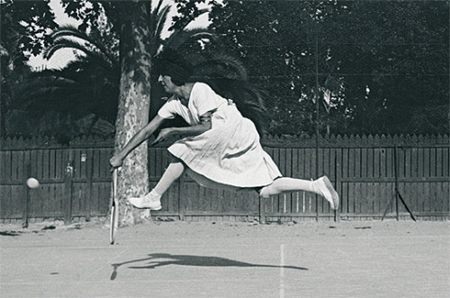
Studying famous photographers from the past can help you understand the art of photography, even in this electronic age.
Jacques-Henri Lartigue was the first photographer to show that equipment comes second to imagination. He was a great individualist taking photographs of “…everything which pleases me, everything I am keen on, which delights or amazes me. The rest I let pass.” Famous lensman Richard Avedon called Lartigue “The most deceptively simple and penetrating photographer in the history of that art.” I can only agree.
Lartigue was born into an upper middle class family in Courbevoie, near Paris. He was a child prodigy, who began to photograph in 1901 at age seven when he received his first camera from his father, who was also an amateur photographer. This camera was no auto everything point and shoot, but a large 13 x 18 cm box on a wooden tripod. He is reported as having said, “Now I will be able to make portraits of everything, everything. I know very well that many, many things are going to ask me to have their pictures taken, and I will take them all!” And he did, keeping a diary illustrated with sketches, in which he recorded the details of each shot. Just the same as I encourage you all to do today.
The amazing aspect of J-H’s photography was that he was able to show movement in his images. Remember that no one was there to teach this young boy, and the cameras, lenses and films were not fast enough to allow him the luxury of fast shutter speeds, yet he could find that split instant in time to stop the action. He would capture the subject, mid-frame, as if posed in mid air waiting for the shutter to click. Truly remarkable stuff for a young boy. And he was young. J-H was born in 1894 and has been resident in the Great Darkroom in the Sky since 1986, yet his influence keeps on.
Fortunately for us, he took plenty of photographs, but the enormity of his collection was not discovered till 1963, by which stage he had over 200,000 photographs catalogued in albums! On his 90th birthday he was still snapping away and had a major exhibition in London. He also donated his photograph collection to the French nation. In addition to his black and white photography, Lartigue made several short films in 1913 and 1914.
What J-H Lartigue gave us, however, in addition to all those photographs was twofold. The first is called ‘Anticipation’. As a photographer wanting to record action subjects, you have to anticipate where the action is, and get yourself ready to record the height of the action. Be that tennis, soccer or golf, the great action shots are at the zenith. It is a lot easier now, because these days even compact cameras have shutter speeds faster than poor old J-H’s first camera, and the top of the line SLR’s have shutter speeds as fast as 1/4000th of a second combined with motor drives exposing multiple frames per second. This makes action photography today much easier than at the turn of the century. However, there is still the need for “anticipation”, Lartigue’s great gift.
The second gift from Lartigue is his diary. He recorded all the pertinent details so that he could reproduce the same concepts later. Photography is always a learning process, and the quickest way to learn is to have records so that you can see what went wrong, or how you got it right!
So let’s have a crack at some “action pix” this week. Take a motorcycle – it leans into the corner and you can see that it was in motion. Or even better, riding through a puddle, with the spray coming up from the wheels. People jumping convey movement too, or skipping rope, water skiing, running, swimming or diving, like Lartigue’s shot of the tennis player, or other physical activities. Anticipate the action and get that action shot.
I am not saying it is easy, but it is well worth the practice. You can set the camera on Auto – but anticipate for a great shot.
 |
 |
 |





